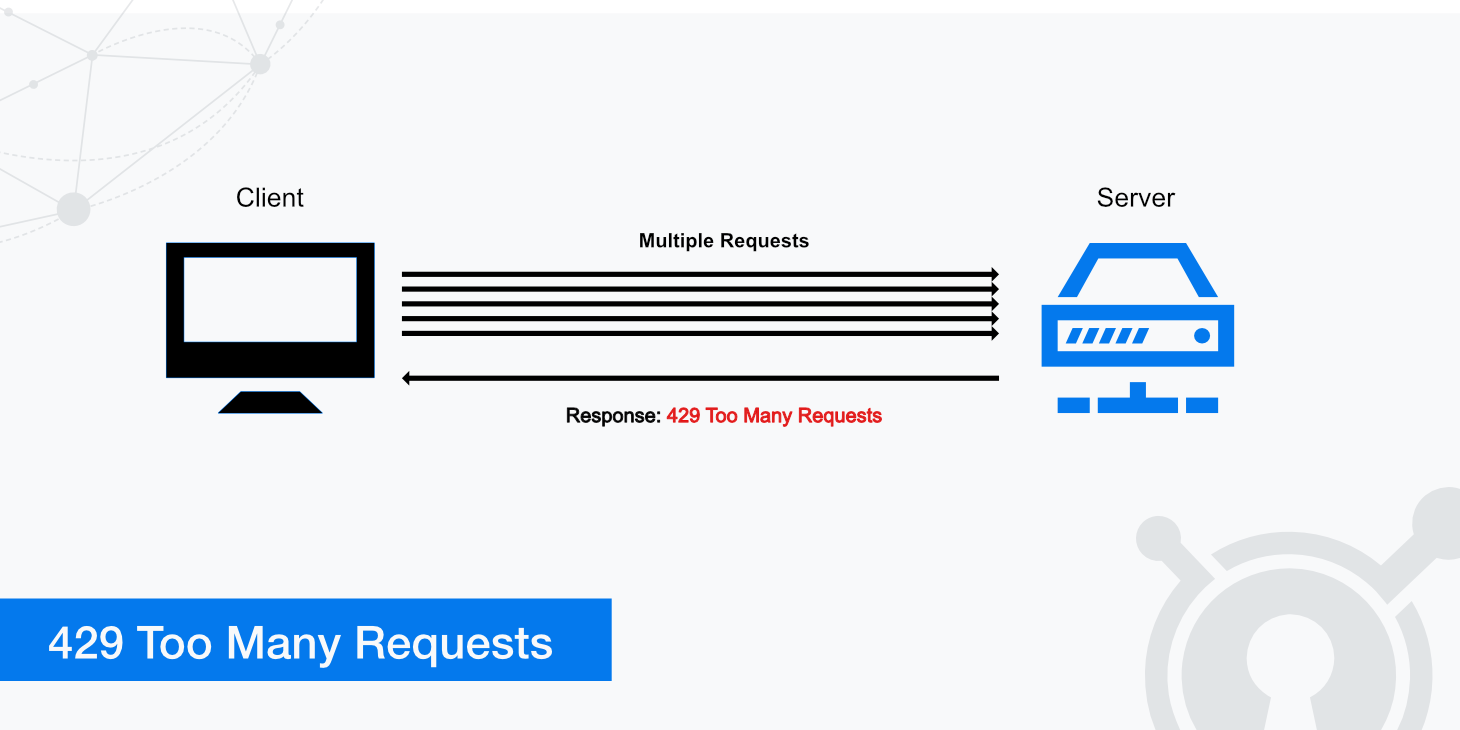429 Too Many Requests

What does a 429 Too Many Requests error mean?
A 429 Too Many Requests error occurs when a user tries to perform too many requests within a specific timeframe. This error is triggered based on the particular rate limiting settings that a service provider's servers have. Rate limiting is used to limit the number of requests a user can perform to help reduce the risk of their servers being overloaded.
How you might see a 429 Too Many Requests error
You may see a 429 Too Many Requests error in a few different ways. The following list outlines a few of these variations that you may see. Although they are slightly different, each one means the same thing.
- 429 Error
- Error 429 (Too Many Requests)
- 429 Too Many Requests
- Too Many Requests
- HTTP 429
How to fix a 429 error
As a user receiving a 429 Too Many Requests error, there isn't really a way to "fix" it. As mentioned above, a 429 error is due to too many requests being made within a given timeframe. Therefore, the server is unwilling to process all requests being made at once. Consequently, it is essential that you know your service provider's rate limit policy and that you do not reach that limit to avoid a 429 error.
According to RFC 6585, a 429 Too Many Requests response should also include details regarding the condition of the rate limiting scheme in place. The server may also return a Retry-After header which indicates how long the user should wait before making another request. An example 429 status response may look similar to the following.
HTTP/2 429 Too Many Requests
Content-Type: text/html
Retry-After: 600
<html>
<head>
<title>Too Many Requests</title>
</head>
<body>
<h1>Too Many Requests</h1>
<p>I only allow 50 requests per hour to this Web site per
logged in user. Try again soon.
</p>
</body>
</html>
Although returning a 429 status code error is beneficial as it lets the user know that they have reached a limit in the number of allowable requests, servers are not required to return this status code.
For instance, if a server is under attack, it would require using valuable resources to return a 429 error to each request. Therefore, in such a case, it may be more beneficial to simply drop connections or employ another form of defense that is less resource-intensive.
Summary
Overall, if you are receiving a 429 Too Many Requests error, you will most likely need to reduce the number of requests made to the server during a given timeframe. If you are unsure what the details are regarding the rate limiting scheme that the particular service you are using, you should contact them to see what the limit is. Additionally, some services may have different plans that allow you to increase your request limit based on your needs.